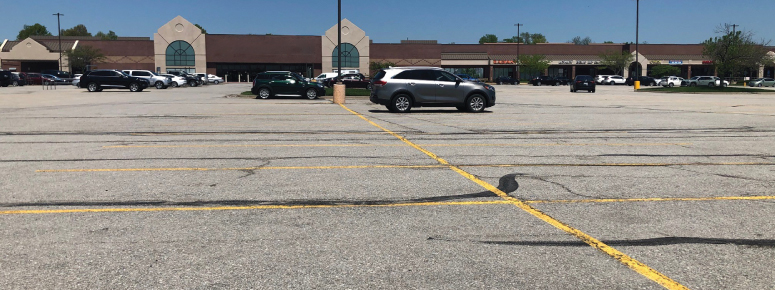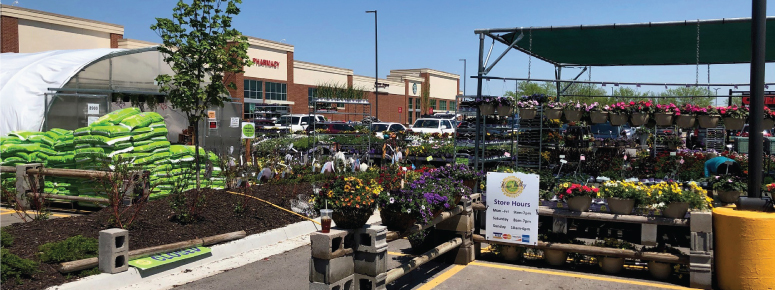Over the past year, grocers have been forced to re-think the needs of their customers. Our team of grocery designers has been keeping a close eye on emerging trends in the industry and which ones the pandemic has pushed to the forefront. We have shared several blogs highlighting our thoughts on changes to the interior footprint of grocery stores, like the front end layout and new changes for the center store, all with the same goal in mind: to help grocers meet the changing needs of their customers.
Now, our team is shifting the focus to the opportunities awaiting grocers in their store’s exterior footprint. Through our work with many food retail clients, we’ve realized some key considerations for owners to think about before making changes to the exterior site.
Parking Lot Layout
The increased adaptation of online grocery shopping has changed the way shoppers interact with not only the interior of the store, but the overall footprint including the exterior site. We’ve also seen a large increase in the number of people opting for at-home grocery delivery which means they aren’t even making their way to the store to pick up their food. This means the number of parking spaces needed by grocers is rapidly decreasing. Many stores nowadays will only be utilizing half of their current parking spaces, maybe even less.
This presents an opportunity for store owners to take advantage of this unused space and revamp those parking spaces for another purpose. Owners should consider how each customer is now accessing the store and use this chance to optimize the exterior facades across the site. Grocers should consider the flow of traffic for each type of customer and create different traffic paths for the in-store shopper, online pick-up and grocery delivery drivers. The key is to consider every person who will interact with the store and ensure the parking lot experience is effortless for each one of them.

Fresh Opportunities
There are a few different ways grocers can utilize this unneeded parking space to maximize their revenues. This space can either be sold or leased to a pop-up retailer for a seasonal retail concept or something more permanent. Or the owner can use this space as their own pop-up based on the seasonal needs of the store. For example, the grocer could create a lawn and garden tent for use in the Spring and Summer and transform the area into a seasonal shop for the Fall and Winter holidays.
Another route is the addition of a gas station and/or convenience store component. We are seeing several of our grocery clients expand their business to include these new store models. These stores create an opportunity for the grocer’s existing customers to have the added convenience of filling up while grabbing their groceries or the ability to quickly purchase a snack without having to enter the main store. One thing to consider for any of these new opportunities is the store sightlines. Owners will want to make sure the main store can still be easily spotted from the street even with these new additions. Added signage or strategic placement can help ensure shoppers know exactly where to go for each shopping experience.

Logistics
With the addition of any one of these new ideas, there are several technical factors to think through. The first step for grocers to consider would be to get approval from the planning and zoning department since the land-use would be changing. Many jurisdictions are decreasing the parking space count which allows for this space to be reallocated, but it would still need to be submitted and approved by the city.
Logistics also need to be considered for these new spaces to be operable. With the retail pop-up idea, the tenant would need access to power, internet and maybe water depending on the type of retailer. These are simple additions and, in most cases, could be run from the main store.
Changes to the exterior site of the grocery store creates opportunities not only for the store owner, but for the shopper and the community. By maximizing the exterior façade and the empty parking spaces in front, the grocery store experience can be revitalized. The owner has the opportunity to capture more sales and gain revenue from potential rent, while the shopper gains convenience with the added amenities and reconfigured traffic flow.



